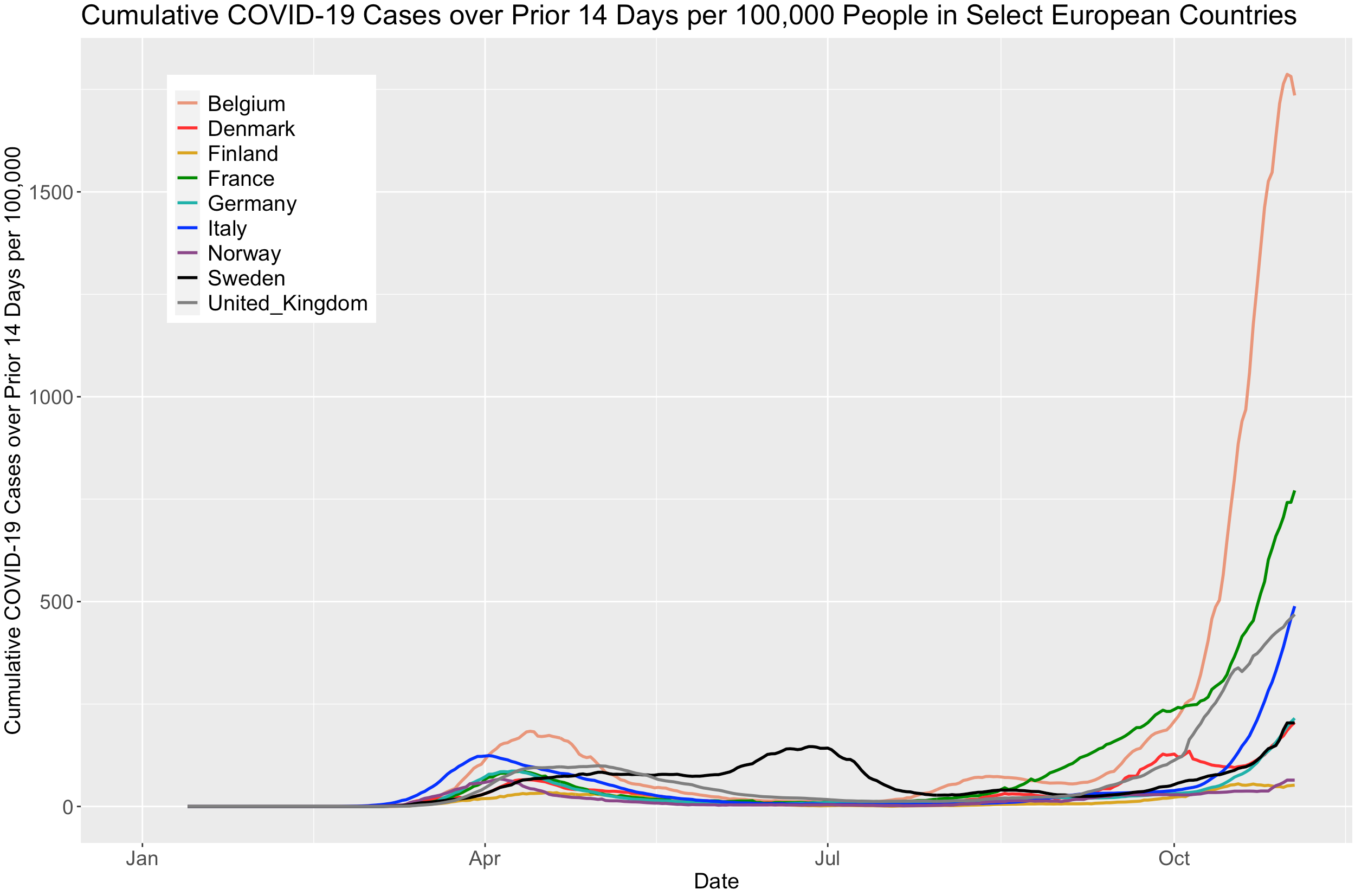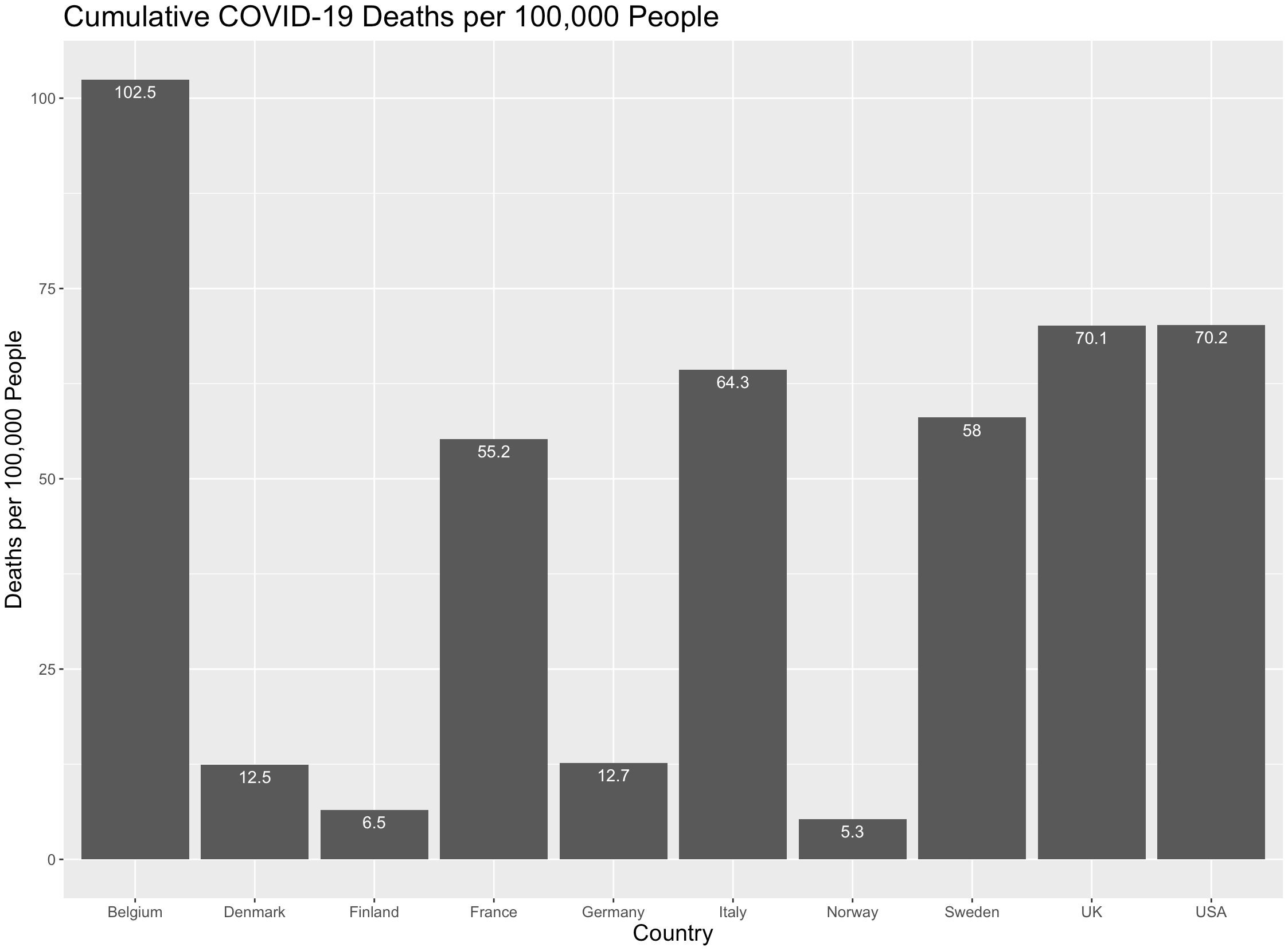Early in the COVID pandemic, most countries, particularly those in Europe, chose harsh lockdowns to get the coronavirus under control, and they were largely successful. But not all of them. Sweden was the notable exception that implemented a different strategy.
Sweden's idea was, with the exception of a few enforced restrictions, to allow life to go on mostly as normal and to impose only voluntary restrictions. So while European countries were furiously working to quash new infections, Sweden took a more laissez-faire approach. Did it work?
There are a couple of ways to answer that question. First, we can compare the second wave in Sweden to the second wave in other countries. Second, we can compare the infections in Sweden to those of its Nordic neighbors, Norway, Finland, and Denmark. By both measures, Sweden's experiment didn't work so well.

Sweden (black line) had a noticeably worse summer than other European countries. Of course, that was done on purpose. But one of the goals, presumably, was to prevent a second wave from sweeping the country. Unfortunately, that didn't work. Note that Sweden's line is creeping upward, alongside Germany and Denmark. Though the situation is starting to get worse in Norway and Finland, they are still doing far better than Sweden.
But Sweden is a blip on the radar compared to other European countries. Belgium is an absolute basket case, with the worst infection rate on the continent. Hospitals are overwhelmed. Government incompetence appears to play a role. Countries that once had the virus under control, like France, Italy, and the UK, have now completely lost control.
How Does Europe Compare to the U.S.?
Americans tend to be myopic and insular, with little knowledge of events outside our own borders. That's largely the media's fault. Thus, we have the narrative that the U.S. is somehow uniquely bad in terms of controlling the coronavirus. But is it true? Let's add the U.S. to the chart shown above.

The U.S. (magenta line) clearly had a very bad summer, even worse than Sweden's. But once autumn came, new viral infections in several European countries soared way past those in the United States. In terms of total COVID deaths per 100,000 people, the U.S. isn't doing wonderfully, but it's also not unusual when compared to European countries.

None of this is to imply that there's nothing to worry about or that the American response was flawless. However, it is useful to put things into context.
Source: European CDC




